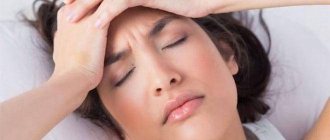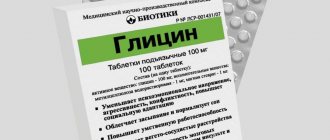In the arsenal of traditional medicine, there are many recipes for the fight against joint diseases - ointments and tinctures, rubs and compresses. And chestnuts in this list are not the last, but rather the leading one - we’ll talk about its use in folk medicine and effective recipes in the fight against joint diseases.
Chestnut as a medicinal plant
Horse chestnut (also called horse chestnut) is a deciduous tree, with an expanded crown, with large and complex, oppositely placed leaves, planted on long cuttings, 5 or 7 palmate. On average, a mature tree can reach 25 meters in height.
Chestnut blooms in May - the flowers are bell-shaped and bisexual, the color ranges from white to pale pink, with velvet edges.
In the period from September to October, the fruits ripen - these are tricuspid boxes, covered with thorns and round in shape, similar to nuts, each of which contains seeds. The seeds are flattened and shiny fruits, dark brown and gray in color.
The plant grows in broad-leaved forests, although it serves as a beautiful ornamental tree for landscaping park areas.
Popular ointments
The pharmacy assortment is replete with various names of drugs based on horse chestnut. The most popular are:
- Troxevasin;
- Lyoton;
- Gerbion;
- Reactive;
- Venoruton;
- Heparin ointment;
- Venzol;
- Ginkor.
These are not all medicines containing horse chestnut.
Their variety is much greater. It is worth noting that their principle of action on the vessels of the legs is almost the same. But you should not use them without first consulting a specialist.
Also, when choosing the right product, many people wonder what is better - cream, gel or ointment.
It is quite difficult to compare these dosage forms. They differ both in the concentration of the active substance and in the general chemical composition.
Gels are made on a water basis. They are transparent and quite viscous.
Creams contain both a water component and fatty components. They are very quickly absorbed into the skin due to their composition. But it is important to know that the penetration depth of the active substance is quite low.
Ointments are the fattest preparation. They are characterized by the greatest degree and depth of penetration of the active ingredients into the human body. When applied, the ointment is not absorbed into the skin, so it must be used carefully. Because it can stain clothes.
Medicinal properties of horse chestnut
For medicinal purposes, doctors and pharmacists, folk herbalists use the bark and flowers, leaves and, of course, chestnut fruits - the inflorescences are collected in May, the fruits in September-October, dried and then used in many ointments and tinctures.
Each part of the chestnut is rich in tannins and glycosides, fatty oils and vitamins, pectin substances - all of them, when used correctly, help to successfully cure many diseases.
What benefits can horse chestnut and its parts bring?
First of all, experts talk about the following beneficial properties of chestnut:
- This is a powerful natural pain reliever and has a pronounced disinfecting effect , suppressing growth and development, the influence of pathogenic microflora.
- Acts as a natural antiseptic and helps relieve inflammation.
- When taken orally, it has a mild diuretic effect and thereby helps relieve pathological swelling.
- They have a rejuvenating effect on the body.
- Chestnut is the first remedy for strengthening the walls of blood vessels, and therefore products with it are often used for varicose veins.
Chestnut-based tinctures and teas have a diaphoretic and antipyretic effect.
“Magic” ointments and gels for varicose veins
Contact forms of therapeutic agents have appeared since time immemorial. Various ointment forms of medicinal substances appear in the works of all famous healers of antiquity. The commitment of many modern patients and doctors to the use of various ointments and gels is so strong that sometimes even common sense recedes. The modern pharmaceutical market presents a great variety of products for topical use: ointments and gels.
Patients with varicose veins rely on such ointments
Treatments for varicose veins are also very popular. In any city pharmacy you can find a whole stand with a good selection of various ointments and gels for varicose veins. The pharmacist will often provide detailed advice on which ointment is best for a specific form of varicose veins. Leading pharmaceutical companies, conducting a wide advertising campaign, use loud and encouraging statements. The hope of curing a serious pathology with a tube of ointment is fueled by “expert opinions” from advertising videos on the Internet and on television. After such information dumps, many patients do not even want to visit a doctor. And for what? If there is a remedy that is unique in its effectiveness and can relieve a long-troubling illness.
How and when to collect chestnuts?
It is recommended to collect chestnut blossoms in the month of May, during the period of active flowering of the tree - large inflorescences are selected, without visible damage or attack by insects. It is better to collect in the afternoon, when the dew has subsided and the flowers have fully opened.
The nuts are collected in September - October; if it is necessary to harvest the bark, it is collected in early spring. The buds are collected at the beginning of March and the leaves - preferably at the beginning of summer.
Chestnut nuts are harvested in the fall
Contraindications
Many tinctures and teas, compresses with the addition of chestnut fruits and flowers are considered by many herbalists and traditional healers to be practically safe to use. But in some cases, experts say that it is necessary to take into account existing restrictions and contraindications.
Such contraindications are diseases and conditions:
- The period of gestation and lactation.
- Kidney failure and kidney problems.
- Intestinal dysfunction.
- Diagnosed tuberculosis and severe forms of anemia.
- Low blood pressure.
The use of chestnut in folk medicine
In folk and traditional medicine, chestnut has found its wide application - it is actively used in the treatment of the following diseases:
- malaria and dysbacteriosis;
- tuberculosis and bronchitis;
- diarrhea and protrusion of hemorrhoids;
- for leukemia and gallbladder diseases;
- for sexual dysfunction and prostatitis;
- ulcers, gastritis and increased acidity of the gastrointestinal tract;
- with heavy and prolonged uterine bleeding and diseases of the vascular system;
- arthritis and arthrosis, radiculitis;
- with anemia and whooping cough;
- heart pathology and inflammation of the muscle corset.
Why do phlebologists prescribe venotonic ointments and gels?
Why do many phlebologists at European-level urban phlebological centers continue to prescribe various ointments for varicose veins? In the complex treatment of venous pathology, good local remedies play a positive role, the condition of the surface layers of the skin improves, and there are certain effects on the smallest vessels (arterioles, venules, capillaries).
The use of ointments in the context of modern treatment is a good practice, but you should not expect miracles and replace the main component of the treatment of varicose veins, the removal of these same veins, with an ointment or gel.
Chestnut medicine recipes
In the arsenal of traditional medicine and modern pharmaceuticals, there are many recipes using chestnut bark and inflorescences, fruits and leaves. There are many types of medicines you can prepare at home.
Chestnut tincture with vodka for joints
Recipe No. 1. To prepare this recipe you need:
- take 600 gr. ground chestnut - the raw material is poured with a liter of vodka;
- then infuse the resulting solution for 2 weeks in a dark, cool place;
- After this period, the tincture is filtered through cheesecloth.
The finished product is taken 30-40 drops, dissolved in a glass of water after a meal, although it can also be used for external rubbing and compresses.
Recipe No. 2. To prepare the following vodka tincture:
- take 2 tbsp. inflorescences with a slide and infuse them for 10 days in half a liter of vodka;
- filter the infusion through cheesecloth or a fine strainer;
- drink 30 drops 2-3 times a day, always after meals.
Alcohol tincture
Chestnut peel tincture also has excellent positive therapeutic results in the fight against joint diseases.
Recipe No. 1. Alcohol tincture can be made as follows:
- it is enough to take 45-50 chestnut skins and split them;
- then pour in half a liter of alcohol and leave for 2 weeks;
- After straining, take 30 drops. half an hour before meals.
This tincture is also used for external rubbing.
Recipe No. 2. Another cooking method:
- Ripe chestnuts are ground in a meat grinder and filled with alcohol in a glass container - 1 liter. alcohol base take 300 g. fruits;
- leave in the refrigerator for a week;
- After straining, drink 25 drops. 2 times a day after meals.
This tincture is especially effective for salt deposition in joints.
Chestnut decoction and tea
The simplest recipe for preparing a simple and effective remedy is an infusion or decoction in boiling water:
- For this, take chestnut leaves and inflorescences - 50 grams is enough. dry raw materials, pour them into glasses of boiling water;
- Having covered, let it brew for half an hour;
- They drink half a glass of this tea in the morning and evening.
A more concentrated decoction can be obtained by preparing the following recipe:
- For a glass of boiling water, also take 50 grams. dried inflorescences;
- then boil them for 30 minutes in a water bath;
- drink like tea, adding honey to taste.
Experts in traditional medicine recommend drinking a tincture or decoction of chestnut flowers every spring, while the chestnut tree is in bloom, for 2-3 weeks, since such products have a bactericidal, anti-inflammatory and rejuvenating effect on the body. In addition, in this way you can support weakened immunity.
Ointment for joints
For external use, ointments made using chestnut fruits and inflorescences have a positive therapeutic effect.
To prepare it take:
- 5 chestnut fruits, ground in a meat grinder or dried 5 tbsp. with a hill of inflorescences;
- fill them with half a liter of vegetable, preferably unrefined, oil;
- then boil in a water bath for an hour, allow to cool and filter.
You can also prepare an ointment based on lard:
- Add 100 grams to half a kilo of melted pork fat. ground dried chestnuts;
- then boil the mixture in a water bath for half an hour;
- in this state they insist for a day;
- This is repeated for 3 days, then filtered while warm.
Compress for joints for pain
Chestnut also has a pronounced analgesic effect - in this case, you can apply healing compresses to the joints.
Compress preparation process:
- take chestnut bark and flowers - 5 tbsp each. l.;
- pour the mixture with a glass of boiling water and leave for an hour;
- then add another 300 ml of water and put it on the stove - when it boils, remove it from the heat;
- Soak a napkin in this decoction and apply it to the sore joints for half an hour.
The following recipe for lotions is alcohol-based:
- 20 gr. chestnut colors pour a liter of alcohol onto the floor;
- it is infused for 14 days;
- The fabric is soaked in this solution, applied to the sore joints, wrapped in polyethylene and heat.
Chestnut joint rub
A chestnut-based rub for a sore joint is a real godsend.
At the same time, preparing it is simple:
- first of all, the chestnuts are peeled and the white pulp is ground in a coffee grinder;
- then take 3 tbsp. l. – they are poured with half a liter of vodka and left for at least 3 weeks;
- after that it should be strained and used for external rubbing of the affected joint - it improves blood flow and metabolic processes, warms and relieves pain.
Medicines from horse chestnut flowers
To prepare medicine from chestnut inflorescences:
- take 5 tbsp. l. inflorescences and infused in 250 ml of vodka or alcohol;
- then leave in the refrigerator for ten days;
- after straining, take 30-35 drops in the morning and evening 30-40 minutes before meals.
Another recipe using vegetable oil:
- take 50 gr. dry chestnut inflorescences and fill them with 300 ml. any vegetable oil;
- then the mass is boiled over low heat for half an hour;
- After removing from the stove, cool to room temperature and, after straining, pour into a glass container.
This mixture not only helps with joint pain, but also does an excellent job of healing wounds and burns.
Chestnut tincture for varicose veins
First recipe:
- grind the chestnut fruits and pour them into a glass container;
- they are filled with vodka so that the liquid covers the raw material completely and plus a centimeter on top;
- infuse for 3 weeks in the refrigerator and, after straining, use it externally for varicose veins.
To strengthen the walls of blood vessels from the inside, an alcoholic infusion of inflorescences and peeled chestnut fruits is prepared:
- for this they take 25 grams. each component and pour 600 ml of vodka;
- insist for 2 weeks;
- Take this tincture 35-40 drops. 3-4 times a day.
Pharmaceutical medicines for joints with chestnut
Preparations for external use from chestnuts can be freely purchased at the pharmacy. But you should not choose them and use them yourself - it is important to agree on the choice and dosage regimen with your doctor.
IMPORTANT! The main thing is not to self-medicate and coordinate each choice of a particular drug with your doctor.
- Liquid "Eskuzan" - chestnut and thiamine extract, tones the walls of blood vessels and has antioxidant properties, relieves inflammation and strengthens veins. Most often prescribed for chronic venous insufficiency, hemorrhoids and muscle pain, hematomas and ulcers, thrombophlebitis. The drug is supplied not only in the form of drops, but also tablets and ointments.
- Venitan - cream and gel prepared from horse chestnut, has a beneficial effect on the condition of blood vessels, strengthening them, relieves pain and has an anti-inflammatory effect. The main thing is not to apply it to skin with open, fresh wounds.
- Ginkor gel - contains extract of chestnut fruits, ginkgo biloba leaves, strengthens the walls of blood vessels and increases their tone, removing pathological swelling, stopping the inflammatory process. Suitable even for pregnant women and nursing mothers.
- Heparin ointment - reduces the level of blood clotting, and thereby preventing the formation of blood clots, accelerates metabolic processes in the walls of veins and blood vessels. Prescribed during pathological processes aggravated by trophic ulcers.
Aescusan liquid Ginkor gel Venitan gel Heparin ointment
Why do ointments and gels not work for varicose veins?
In order to understand how effective local remedies are in the treatment of varicose veins, it is necessary to understand what “varicose veins” are. Varicose veins of the lower extremities are classified as surgical pathologies. Treatment of this group of diseases is always
carried out surgically. All conservative measures are used only as auxiliary and nothing more. Today there is no magic ointment that will cure varicose veins. This does not mean that local remedies are completely useless, but their effect should not be overestimated.
There are even such ointments for varicose veins!
Does rubbing the ointment with uniform, massaging movements contribute to a feeling of relief and comfort in the lower extremities? Absolutely yes. Does this treat varicose veins as such? Definitely not.










